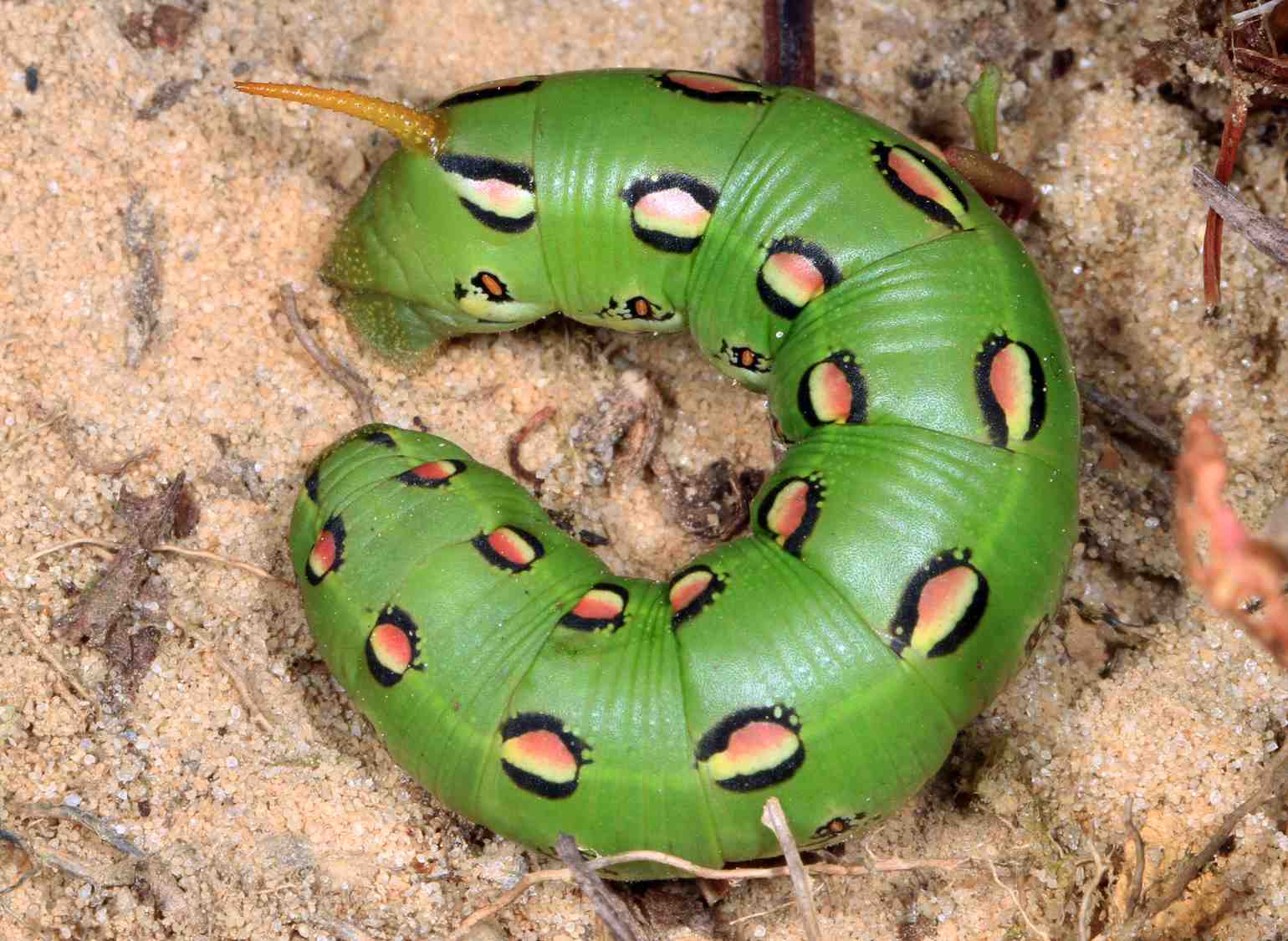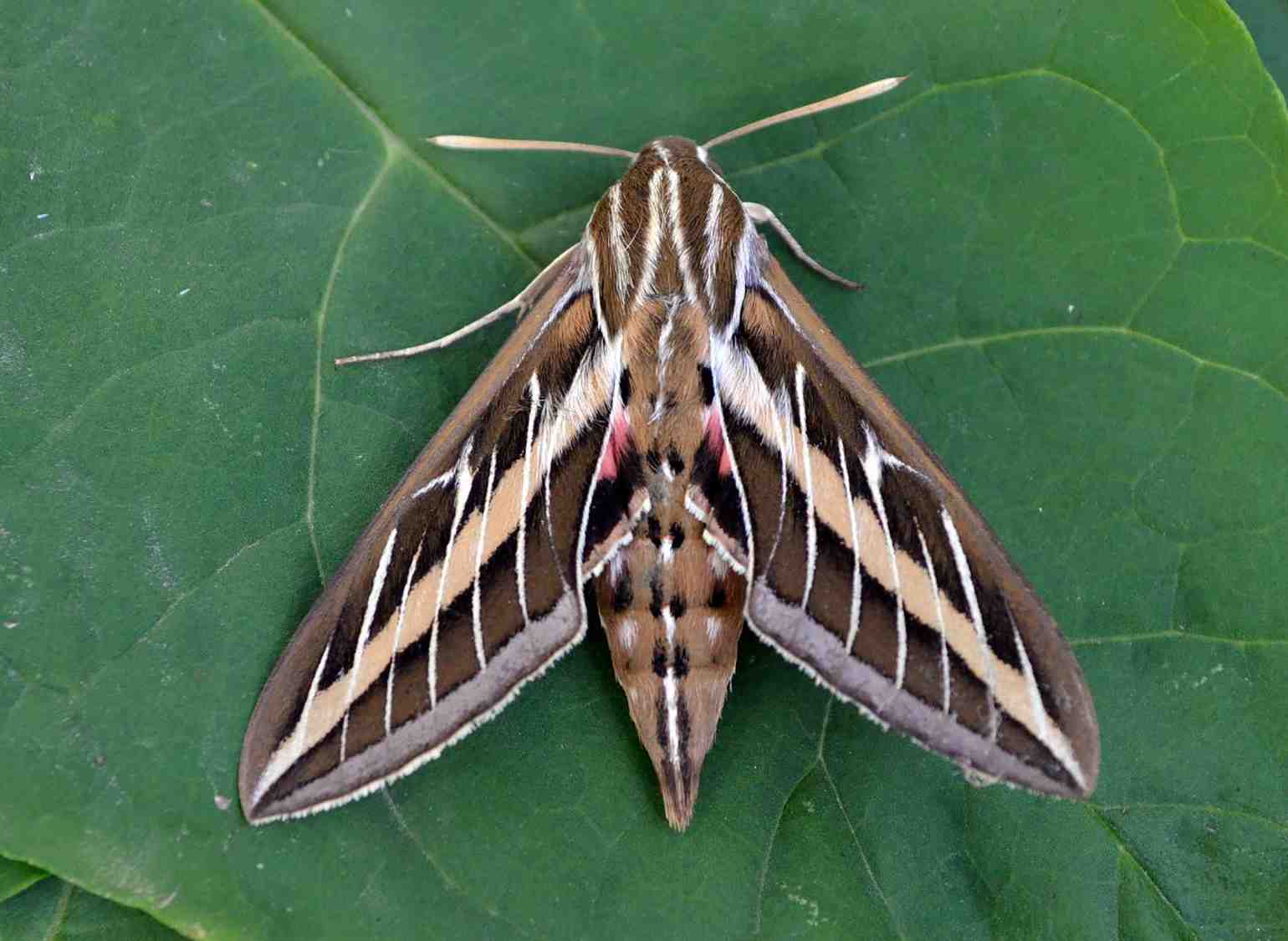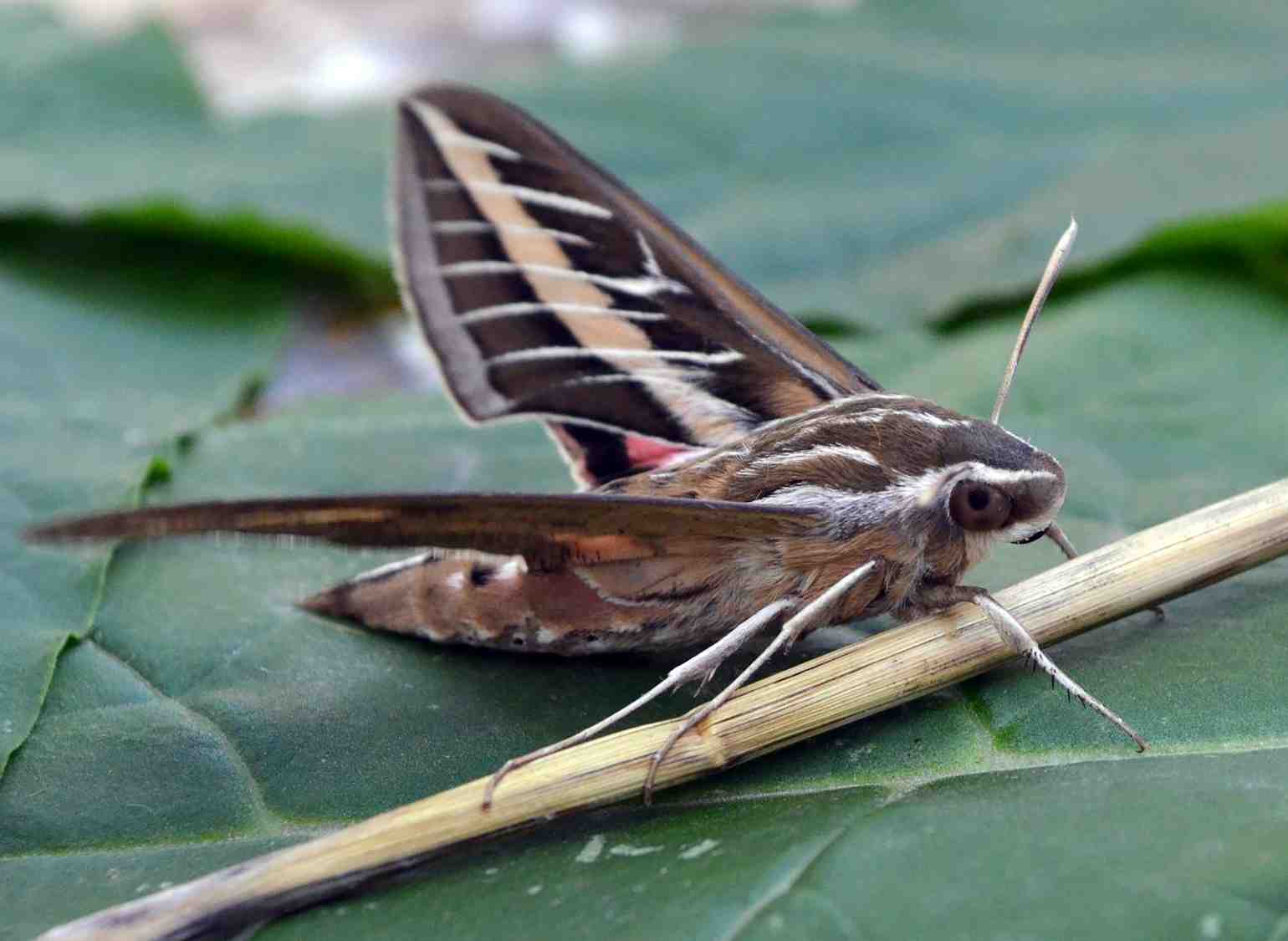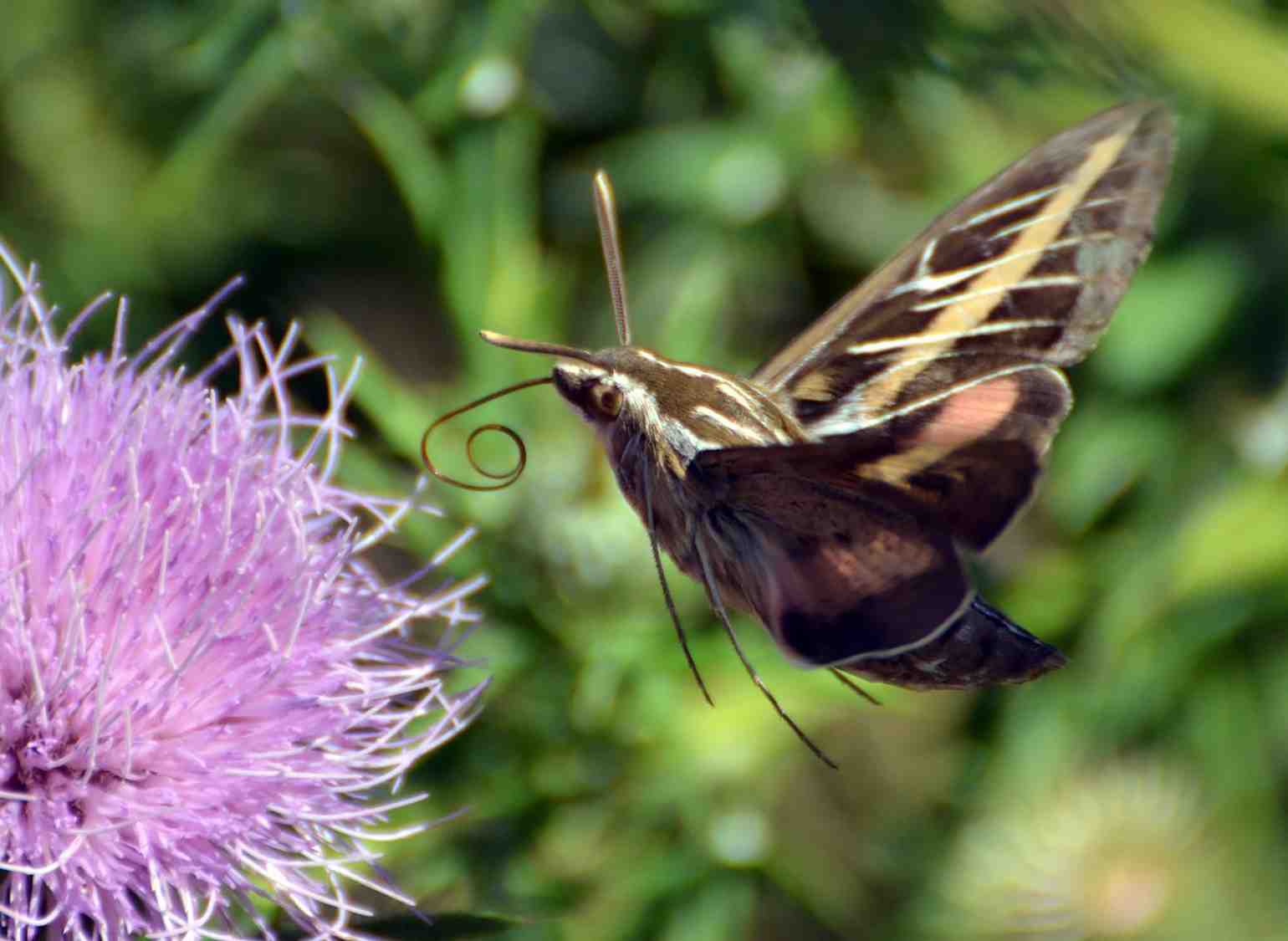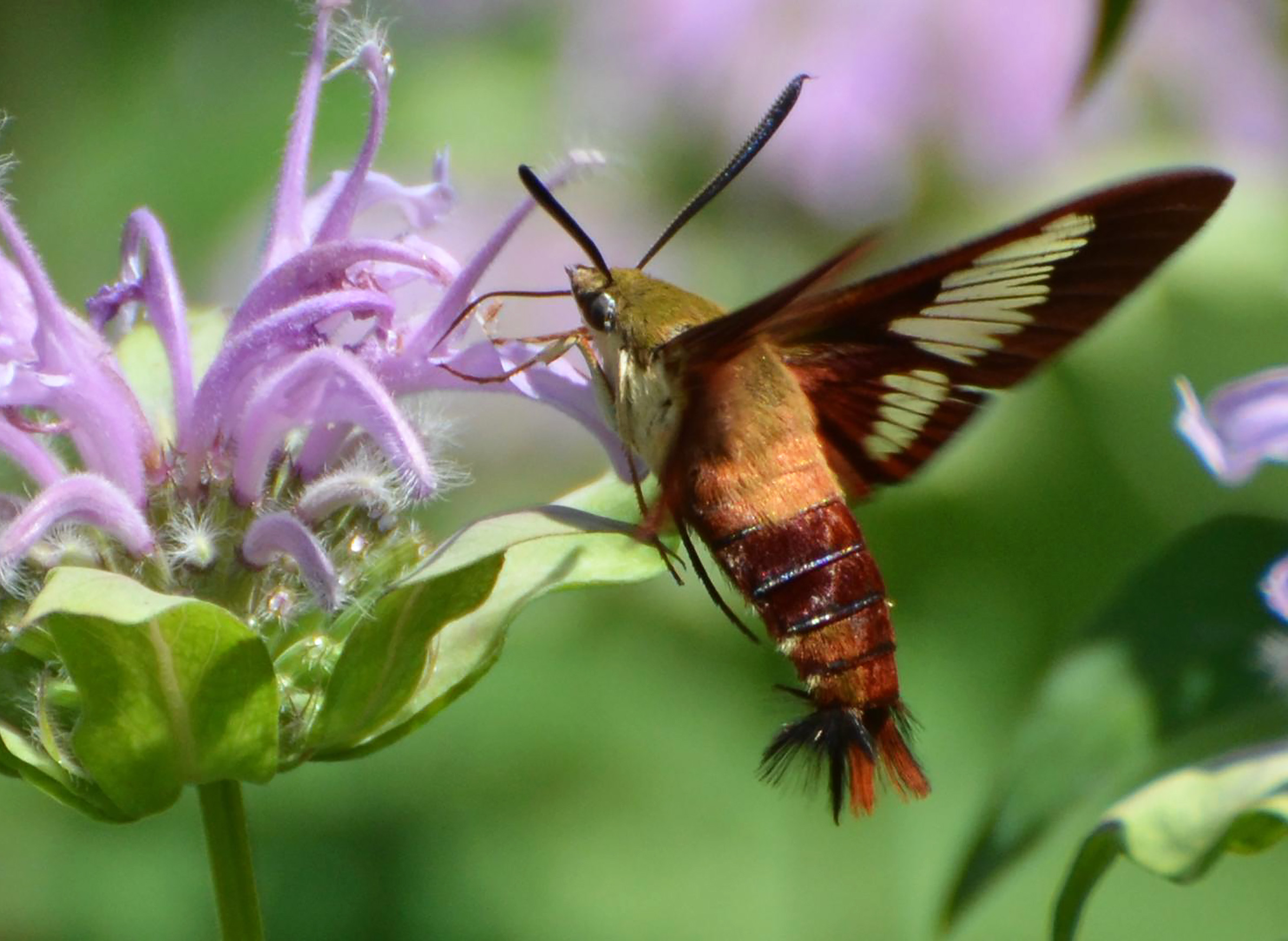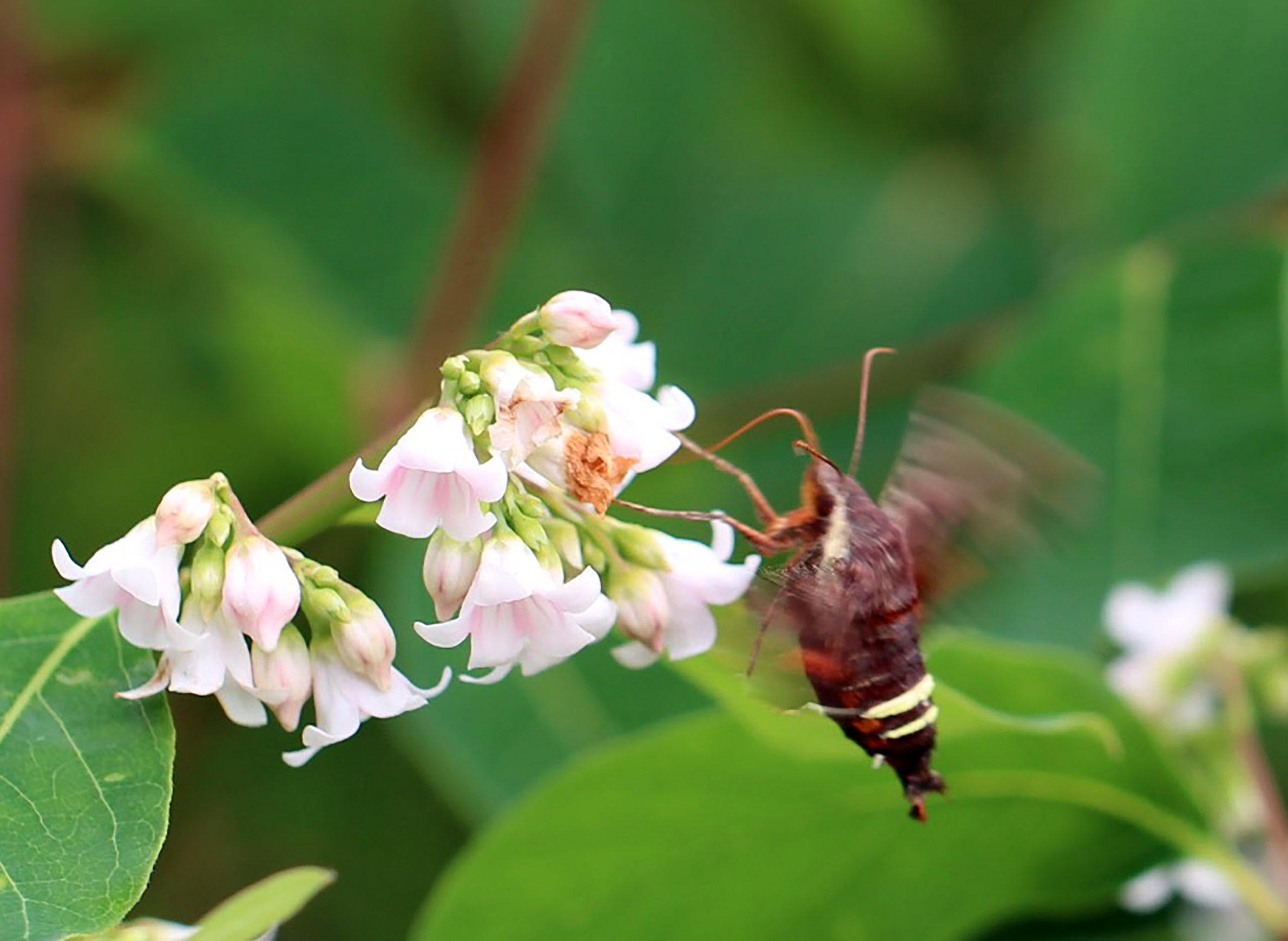Observant visitors to parks and gardens around Wisconsin over the summer might have noticed a surprising creature hovering among the flowers — the hummingbird-like sphinx moth.
Several species in the “sphinx” or “hawk” moth group (Family Sphingidae) are known for their day-flying, hummingbird-like behavior. From a distance, these moths can easily be mistaken for hummingbirds as they skillfully maneuver from flower-to-flower sipping nectar with their long mouthparts.
News with a little more humanity
WPR’s “Wisconsin Today” newsletter keeps you connected to the state you love without feeling overwhelmed. No paywall. No agenda. No corporate filter.
One of the most common members of this group in Wisconsin is the white-lined sphinx moth (Hyles lineata). With a wingspan of nearly 4 inches, it’s easy to understand why this species can be mistaken for a hummingbird as it feeds. The white stripes on the forewings of the greyish adults are easy to pick out, though, and help identify these insects in the field. The caterpillars (called “hornworms“) of this species reach nearly 3 inches in length and feed on a wide range of plants.
While white-lined sphinx moths are regularly encountered around the Midwest, 2018 was especially good for this species in Wisconsin. The University of Wisconsin Insect Diagnostic Lab received many reports of the caterpillars in mid-to-late July — sometimes in astounding numbers. In several instances, “outbreaks” of tens of thousands of these large caterpillars were spotted as they migrated across roadways from agricultural fields. These multitudes of caterpillars then pupated and transformed into nectar-loving moths — leading to a late summer spike in sightings.
In addition to the white-lined sphinx moth, several other hummingbird-like sphinx moths have been common around the state in 2018 — the “clearwing” hummingbird moths (Hemaris spp.) and the Nessus sphinx moth (Amphion floridensis).
The rusty-colored “clearwing” moths (Hemaris spp.) are smaller than the white-lined sphinx moth, and have a wingspan of approximately 2 inches. Their shaggy appearance and patches of yellow coloration lend them a resemblance to large bumble bees, and characteristic transparent “windows” in their wings help with identification. Several Hemaris species can be encountered in the Great Lakes region, with subtle differences in appearance and biology. Both the hummingbird clearwing moth (Hemaris thysbe) and the snowberry clearwing moth (Hemaris diffinis) can be common, while the slender clearwing moth (Hemaris gracilis) is associated with pine barrens and rarely encountered.
The Nessus sphinx moth was also commonly reported around Wisconsin earlier in 2018. Although somewhat similar in size and coloration to the clearwing species, the Nessus has opaque wings and two distinct yellow bands across its abdomen.
In addition to being a joy to observe, sphinx moths are a great example of pollinators that are not bees. Their unique behavior and anatomy allows them to form interesting relationships with some of the plants they pollinate.
In an extreme example, the Christmas star orchid (Angraecum sesquipedale) from Madagascar possess extremely long tube-like floral structures which contain its nectar. Upon learning of the unique anatomy of this flower, the famed naturalist Charles Darwin speculated that a moth with equally long mouthparts must exist to pollinate them. It took over a century to document, but sphinx moths wielding foot-long mouthparts were finally observed pollinating the Christmas star orchid.
Editor’s note: University of Wisconsin-Extension entomologist PJ Liesch is director of the University of Wisconsin-Madison Insect Diagnostic Lab. He blogs about Wisconsin insects and can be found @WiBugGuy on Twitter.
The Deceptive Sphinx Moth’s Big Summer In Wisconsin was originally published on WisContext which produced the article in a partnership between Wisconsin Public Radio, Wisconsin Public Television and Cooperative Extension.
This report was produced in a partnership between Wisconsin Public Radio, PBS Wisconsin and the University of Wisconsin Cooperative Extension. @ Copyright 2025, Board of Regents of the University of Wisconsin System and Wisconsin Educational Communications Board.



